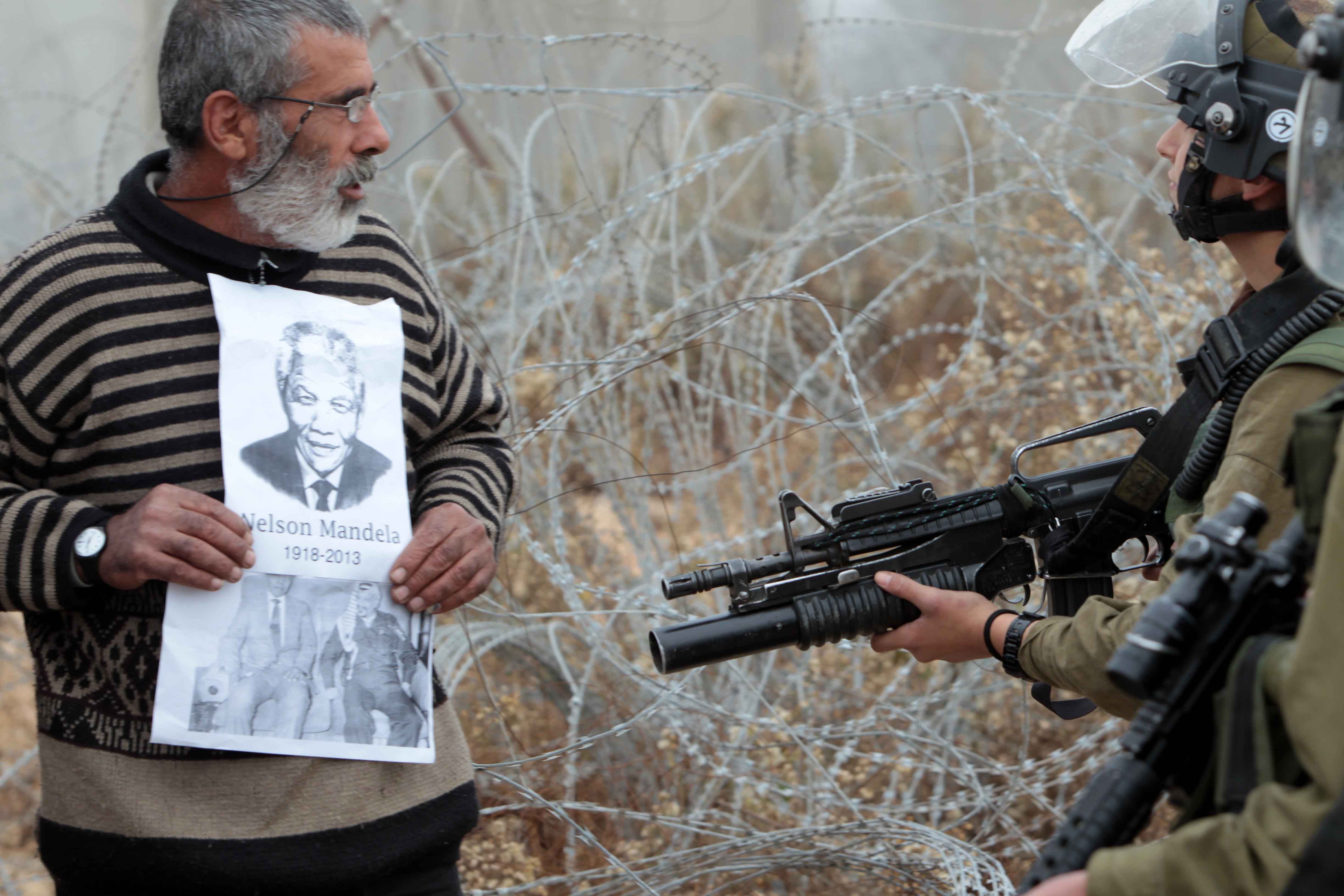
The world pays tribute to Mandela (slideshow)
As South Africans come to terms with the loss of former president Nelson Mandela, the rest of the world bids farewell to Madiba.
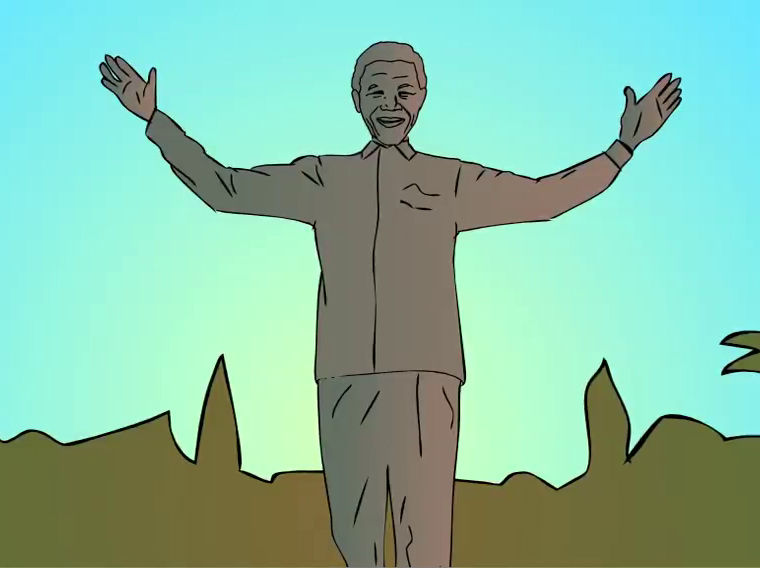
Pimples: Saving Madiba's rabbit (video)
Gwede, Mac and Blade try their best to stop the rabbit from whispering in Mandela's ear. But the elusive animal has some tricks up its sleeve.
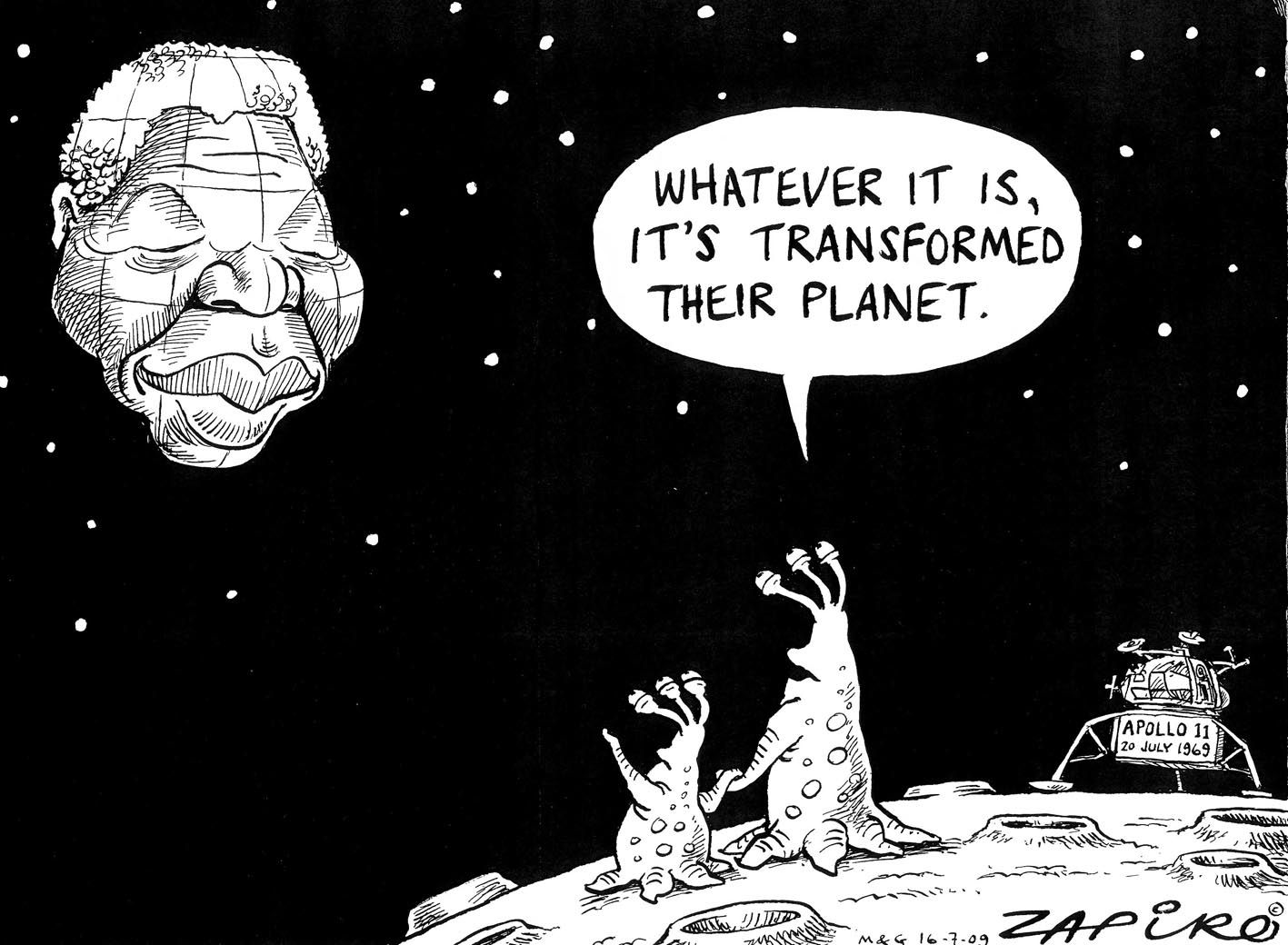
Zapiro's best Madiba cartoons (slideshow)
From his toughest moments to his most triumphant, Madiba has been an inspiration. Here are some of our favourite Zapiro cartoons about him from 1994 to 2013.
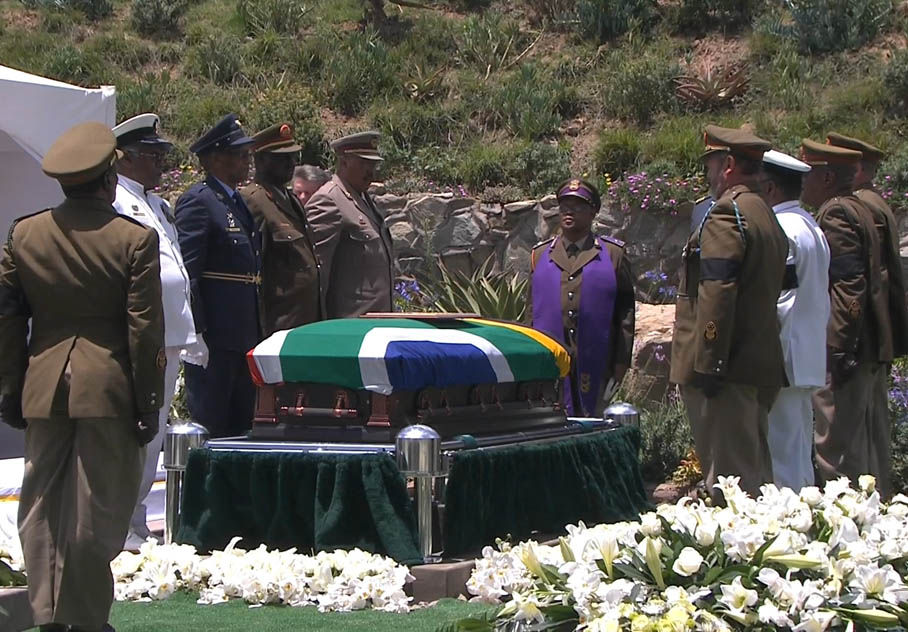
Mandela: SA's greatest son laid to rest (slideshow)
The world watched as Nelson Mandela was finally laid to rest in his hometown of Qunu following a dignified and moving funeral ceremony on Sunday.
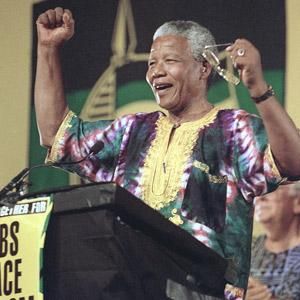
In February, a few days after the furore over Nelson Mandela's recent health scare subsided, I flew home to the United States to help my mother, who had herself fallen sick.
Mandela was still on my mind, and as I walked the streets of my home country, I noticed anew how confidently organised the US is around the memory and image of our own national father, George Washington. The Washington Monument javelins out of downtown Washington DC, as jauntily as the Hillbrow Tower.
No building in our capital is, or legally can be, taller. Bronze and marble statues of Washington fan out like moral fence posts over the country, from balmy South Carolina to rural Idaho and New York, where there are no less than seven in the city. Washington's February birthday is a national holiday and this year I drove to his old estate in Virginia, where I paid to join his birthday celebration using bills and coins decorated with engravings of him.
An impersonator dressed in a powdered wig and an old-fashioned three-cornered hat helped hand out steaming oat pancakes to throngs of children. (Evidently Washington strictly ate pancakes for breakfast to keep himself strong.) Outside the whitewashed house, a long queue of twentysomethings locals, not tourists was forming to glimpse the intimate details of how our founder had lived.
What will Mandela's 279th birthday in 2197 be like in South Africa? Will statues of him have risen over the Orlando Towers and Table Mountain, on the Wild Coast and in the Karoo? Will young South Africans shell out cash stamped with his face and queue up behind his house in his home village of Qunu, as a grinning look alike in a Madiba shirt doles out paper-cup samples of Tata's favourite crab curry?
It doesn't seem likely. Partly because it's so hard to imagine 200 years into South Africa's future, given how much things have changed over the past 15. But I also experience a reluctance here to imagine how Mandela's legacy will be understood and remembered, which I think comes from an uneasy feeling that when he dies, his relevance might begin to die with him.
How do you permanently root a national identity on a man whose overwhelming vibe was humility, whose whole point in retiring after two presidential terms was to prove that a true democracy does not need any one man to survive? Madly propagating his image in statuary would feel inappropriate, more befitting a Mobutu than a Madiba.
And there's the deeper worry that perhaps Mandela, for all his greatness, will not turn out to have been a leader whose virtues are enduring, an eternal model for future leaders of South Africa. Perhaps he was merely the right man for his moment, one who accomplished a crucial goal -- averting a civil war at the end of apartheid -- but whose own guiding value of reconciliation becomes less and less applicable as time goes on. If that is so, is it even healthy to keep revering him as some kind of national totem?
America now might seem secure in our relationship with our founding father. But actually, in the beginning, we also struggled mightily with how to understand and honour our founder's place in our national life. And our struggle might hold some clue to what will happen once this process begins in South Africa. Like Mandela, Washington was our first president. But the parallels go much deeper than that. Washington also startled the world by rejecting the authoritarian crown most leaders in his place would gladly have seized. (Washington actually gave up power twice: once at the end of the revolution against Britain, when his grateful troops begged to make their top general king, and again after serving two presidential terms.)
South African virtue
Like Mandela, Washington wasn't really the brains of the revolutionary operation -- that would have been Thomas Jefferson and Alexander Hamilton, who wrote many of Washington's speeches -- but rather its emotional focal point. Both Washington and Mandela drew that intense focus through their suffering. Washington was actually "a terrible general", Joseph Ellis, a scholar of the American revolution, confided to me. "He lost almost every battle."
Watching his under-trained rebel troops die anguished and humbled Washington. The way he triumphed over his own military shortcomings and the general labour pangs of birthing a nation through persistence and careful study came to define the quintessential American virtues, like Mandela's manner of triumphing over his imprisonment made forgiveness a defining South African virtue.
By the time Washington left office in 1796, he had come to embody the new nation. Everybody marvelled at his goodness and wondered how they would manage without him. Americans had many disconcerting cultural divisions then, more than the other nations around them seemed to have. They hailed from different religious and economic backgrounds. Some owned slaves; others hated slavery. "If we didn't have Washington, we wouldn't have held together through the 1790s," Ellis told me. "Of course," he pointed out, "normally such a national unifier is an emperor or a dictator."
Washington himself understood his fragile country's paradoxical need to anchor itself on his persona even as its political system proudly asserted that he was dispensable. As he left office, he began discreetly working with a French architect on a plan for an equestrian statue of himself at a cardinal point between the presidential residence and the legislature building so future executives and lawmakers alike could train their eyes on his shining example.
Within six months of his sudden death in 1799, though, trouble began. Ironically, it was argument over the legacy of their great unifier that really brought out the divisions between Americans. Some people wanted to build Washington an enormous monument. Others argued that such a remembrance would be anti-democratic, that it would waste the fledgling country's money and that we had to move on. The equestrian statue was scrapped. Briefly, the American legislature even banned celebrating Washington's birthday.
Fifty years later, plans for the obelisk that would become the Washington Monument were finally in place. But no sooner had construction started than it became the nexus for an increasingly bitter fight over our national identity. In the 1850s, the diverse American society was rapidly falling apart. The biggest fracture was over slavery, but there were many others. Prohibitionists, Catholics and a xenophobic political party jockeyed for influence over the monument's construction and, by extension, the American soul.
By the time the American Civil War broke out in 1861, the obelisk had been abandoned. Cattle wandered around rubbish at the base of the half-built stump. Onlookers lamented that the monument literally looked like a chimney. Figuratively, it looked like shame. It seemed to represent the death of the American dream. It turned out a free society, the experiment into which Washington had invested so much hope and work, couldn't even agree on how to erect a stack of stones.
'The nations wounds'
And so when the Civil War ended and the dream was restored, there was no more obvious way to "bind up the nation's wounds", as President Abraham Lincoln advised the weary country to do, than to re-remember Washington and finish his monument. Work began again on the poor obelisk until it became the tallest building in the world. Its dedication in 1885 in front of a huge crowd was "perhaps the most important event of national spectacle in the 1880s", Kirk Savage, the author of the architectural history Monument Wars, told me. A former general from the defeated Southern army was selected to give the keynote speech, signalling that the monument's completion was to be understood as a milestone of national healing and rebirth.
While I was researching how Washington has been commemorated, I was surprised to learn that many of our statues of him are relatively new. One was built during Washington's lifetime: a hulking bronze in the Virginia state capital, the vaguely embarrassing equivalent to the Mandela of Sandton City. But more were built after the Civil War, 60 years after Washington died. Americans kept erecting new Washingtons throughout the 20th century, constantly deepening his totemic value after that first stretch of uncertainty.
In this newspaper, during Mandela's health scare, Nic Dawes wrote that his bodily presence "is part of our national being. We worry that we may not be quite ourselves without him". The lesson of America's battle to preserve Washington's almost mystical binding power over our country is: Yes, you may lose him. It is hard to know just what you are trying to preserve. But he may come back to you again when you need him most.
I doubt Mandela will ever dominate your geography through statuary like Washington dominates ours. Equestrian statues are a pretty Western thing, and even in the West, the monumental aesthetic is dying. But South Africa will need images in order to remember. Given that Mandela is the national icon, I'm sometimes struck at how little his iconography permeates the fabric of South African life. That is proper while he is still alive. But in the years ahead, South Africans will have to work out how to fully embrace Mandela as a symbol.
These days, it's mostly tourists who buy the hats and T-shirts printed in cloth patterned with Mandela's picture. The only local setting in which I've seen it is my friend's guesthouse in Johannesburg. She upholstered the dining-room chairs in it. We sat on Madiba's face as we ate breakfast. That might seem cheeky. But the richer the multiplicity of ways Mandela becomes remembered over the years, the better.
When I went home in February, I found my American friends emailing around a popular, funny animated YouTube video glorifying George Washington. The creator offers increasingly hyperbolic tributes to Washington's heroism, including a claim (false, as far as I know) that he had "two sets of testicles". ("So divine!" chirps the narrator, over a rather unsettling drawing of our founder in stockings.) Irreverent, yet reverent at the same time, the video actually expands our connection to Washington and transmits the idea of him to younger Americans less likely to hike up a monument or go visit a bronze statue.
Don't strive too hard to rein in or orchestrate the commemorations of Mandela. Let them run wild. Let Mandela appear on a mural wearing dreadlocks. Let him appear splayed out on an autopsy table, his humanity laid bare by the pointing finger of Nkosi Johnson. Such depictions cannot diminish him. Let his image be fought over, like Washington's was. That struggling, though nasty, was part of a process of resolving national questions, such as whether slavery and xenophobia could endure in a country whose founding ideals were equality and freedom, that remained unresolved at the time of Washington's death. Let his meaning change and multiply; in other words, live.
Eve Fairbanks is an American freelance writer living in South Africa

